
Sacred Source images of Diana
Goddesses Dictionary: Diana
Dianic Mythology
 |
Diana, Roman Goddess of the Moon, crowned with the lunar crescent. Sacred Source images of Diana Goddesses Dictionary: Diana Dianic Mythology |
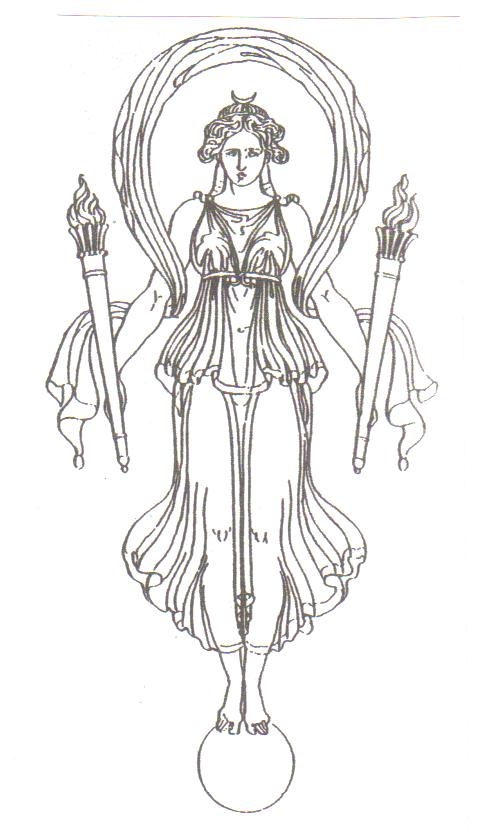 | The Roman Moon Goddess Luna is often depicted as a matron crowned wtih a lunar
crescent, sometimes driving the moon chariot, drawn by white horses. she is also
frequently depicted bearing a torch or, as in this case, two torches. She is in
visual iconography linked to Juno Lucina (the Light Bearer) and Hecate Phospherous
(Hecate the Light Bearer). Goddesses Dictionary: Luna Goddesses Dictionary: Losna Goddesses Dictionary: Lucina Goddesses Dictionary: Hecate Goddesses Dictionary: Juno Dianic Mythology: Diana Nemorensis, see Luna Sacred Source image of Hecate |
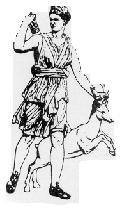 |
The Greek Artemis, the Huntress, maiden aspect of the moon, was later identified with the Italian Diana.
Here she is shown with one of the stags of her forest. Interestingly, in Roman depictions Diana as the Huntress
was often shown with canines. Sacred Source images of Diana Goddesses Dictionary: Artemis |
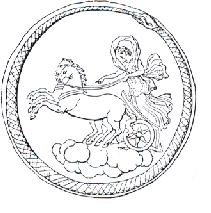 |
A depiction of Diana or Selene as she drives the moon chariot across the night sky. She is surrounded by
a regenerative snake, which indicates the lunar powers of renewal. Goddesses Dictionary: Selene Hecate Pendant |
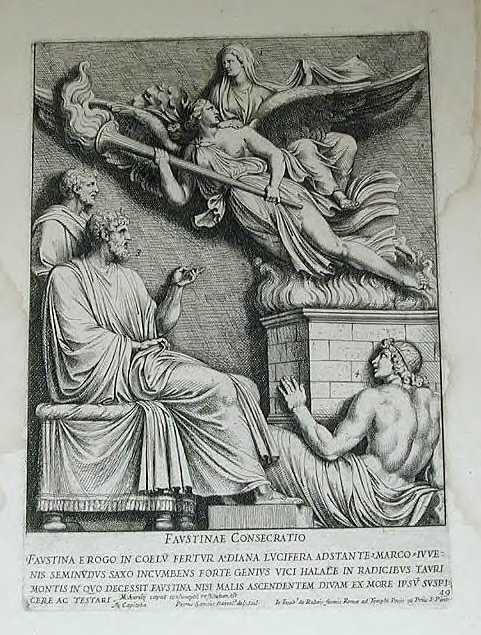 |
This artwork, FAVSTINAE CONSECRATIO, the Consecration of Faustina depicts the Roman Empress Faustina being carried to dwell with the Gods by DIANA LVCIFERA, Diana Lucifera. According to the person who sent me this image, Diana Lucifera was also depicted on many Roman coins, some coins dating back during the Roman Republic. "She [Diana Lucifera] is frequently on the reverse of coins bearing a portrait of Faustina on the obverse. After Roman helenized their pantheon, Diana Lucifera became identified with Hecate, just as Artemis became almost synonymous with Diand the virgin huntress." He continues explaining that the feast day of Diana Lucifera was November 16 and November 15 was the night of Hecate. "Curiously, whereas the Catholic Church absorbed Diana the virgin as the blessed Virgina Mary, Diana Lucifera was almost completely forgotten." She seems to have a link to Diana Lucina. Both names mean Diana the light bearer. |
 |
In many sources, these two images are labeled as Gnostic artwork or Gnostic gems. They both apparently date
from the time period in which the Gnostic movement flourished. They seem to both be Pagan images, though, or
perhaps purely symbolic representations, or maybe just simply old lucky charms. In any case, the one on the
left seems to represent Apollo and the one on the right is apparently Luna or perhaps
another moon goddess. Sacred Source image of Apollo Dictionary of Gods: Apollo Dianic Mythology: Dianic Creation Myth, see Apollo Lucetius Dianic Mythology: Diana Nemorensis, see Virbus Goddesses Dictionary: Luna Dianic Mythology: Diana Nemorensis, see Luna |
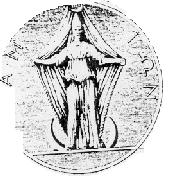 |
 |
This was described as a Gnostic gem of Luna or Diana and supposedly depicted the moon goddess with a cow
instead of a deer. The cow's horns were said to form the crescent moon. It's true the diminutive figure might be
wearing Diana's hunting tunic. However, I think it might be more likely to represent Mithras in his signature cap
preparing to slay the bull. Goddesses Dictionary: Luna Sacred Source image of Luna Dictionary of Gods: Mithras Sacred Source image of Mithras |
 |
The Spinner.
In Italy and around the Mediteranean, the earliest form of spinning was the drop
spindle. The spinning wheel shown here is a later development. The great wheel in use
in India in 500 BCE was later used in Europe sometime during the late Middle Ages.
There are records of it appearing in Europe in 1300 CE. The Saxony wheel, which was
pedal driven, was invented in Germany in 1400. The spinning of thread and weaving of
cloth in Italy and around the Mediteranean were one way women were able to achieve economic independence
as well as performing necessary tasks for the household. This decidedly female domestic
activity never quite lost its mystique from pre-Christian times. Goddesses were often
described as spinning or weaving the fates of mortals. Goddesses Dictionary: Fates Goddesses Dictionary: Fata Goddesses Dictionary: Fata Diana Seven Folktales from Italy: Giricoccola Secret Story of Aradia Quotable Quotes: Excerpted from a Love Charm |